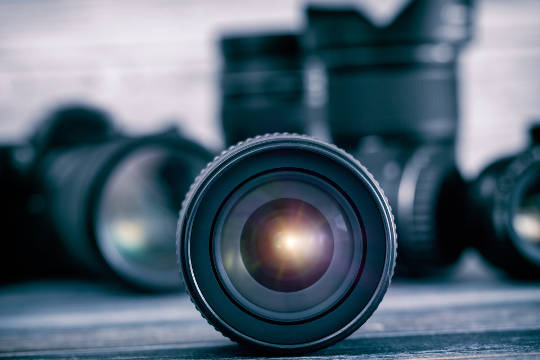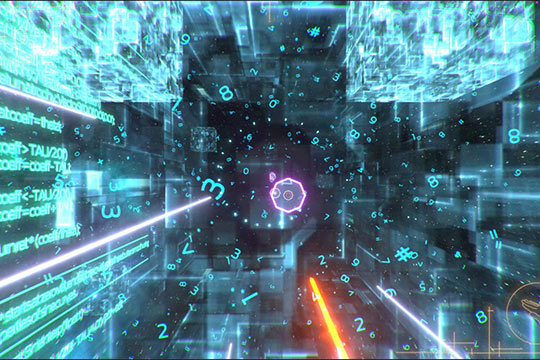TECHNOLOGY FOCUS
Highly sophisticatedCMOS image sensors are key components of modern cameras. Technology as well as device architectures are optimized to obtain peak performance of the image sensor and the camera system. The most advanced CMOS image sensors show pixel sizes far beyond 1 µm. The imagers demonstrate a light sensitivity comparable to that of the human eye.
Another feature, the back-side illumination in combination with stacking technology, is no longer limited to high-end professional applications. In addition, the modern camera systems can present a dynamic range of 120 dB or more. The equivalent noise level is in the range of sub-electron noise.
Furthermore, the image sensor fabrication technology is not yet pushed to its ultimate limits. Image sensors make use of CMOS technologies that are lagging 2 or 3 generations behind those of digital integrated circuits or solid-state memories. Even more interesting developments can thus be expected in the near future. Will imagers ever outperform the human eye as far as light sensitivity is concerned?


COURSE CONTENT
This is an advanced course focusing on the solid-state image sensor technology. It is intended for the specialists in the field. A very good background of digital imaging is needed to get the most out of this course.
It can be regarded as a continuation of course No 013 Digital Imaging: Image Capturing Image Sensors, Technologies and Applications. The content is based on comments, suggestions, and remarks received from previous participants in courses No 013 and No 014 Digital Camera Systems.
WHO SHOULD ATTEND
This course is intended for the specialists in the field.
A very good background of digital imaging is needed to get the most out of this course.

DAILY SCHEDULE
Day 1
CMOS PIXELS
Pinned Photodiode
What is new in CMOS image sensor pixels after the introduction of the pinned photodiode? The pinning layer created a real breakthrough in CMOS imaging, but does the pixel development stop with the pinned photodiode? An interesting concept to create very small pixels is the so-called shared pixel architecture, primarily based on pinned photodiodes as well. Advantages and disadvantages of the shared pixels will be discussed.
Global Shutter Pixels
The Rolling Shutter is still an issue in CMOS imagers that are being used for instance in broadcast, machine vision, and other applications. What are the alternatives in pixel design to turn the rolling shutter into a global shutter? Pixels with 4, 5, 6, 7 and 8 transistors will be compared to each other, as well as global shutter options in the charge domain and voltage domain.
Wide-Dynamic Range Pixels
Pixels are getting smaller and the specs on dynamic range are becoming tighter. What kind of architectures can be implemented to extend the dynamic range?
Day 2
CMOS IMAGER SYSTEMS
Noise on Pixel Level
At present, the pixels and the in-pixel circuitry are the limiting noise factors. From where is the remaining noise coming? What kind of new developments can be expected? Topics such as Transfer Gate noise, RTS noise and 1/f noise will be discussed.
Noise on System Level
Noise can be used as an interesting measurement tool in the so-called Photon Transfer Curve method. Parameters such as conversion gain, dynamic range, saturation level, noise floor, quantum efficiency, PRNU can be deduced. If the method is performed in darkness, dark current levels as well as DRNU can be measured. Further elaboration of the method will explain that this technique is not only a useful measurement tool but a diagnostic tool as well.
Day 3
NEW TECHNOLOGIES
Back-Side Illumination
Back-side illumination to obtain extremely high quantum efficiencies is becoming very popular. Several fabrication methods will be compared. A crucial part of the technology is the passivation of the backside of the sensors. The background of the passivation issues will be highlighted.
Electron Multiplication
In case of extremely low light level, the EM-CCD is a very interesting and powerful image sensor. This device is characterized by the fact that an electron multiplication stage is included just before the output amplifier. In this way a gain can be applied to the signal in the CCD without amplifying the noise of the output stage. Equivalent noise levels of sub-electrons are being reported.
Time-of-Flight
Sensing depth or the third dimension (3D) is becoming more and more important. The course will discuss one of the most appealing techniques to measure the distance of object in front of the camera lens by means of a non-contact method: time-of-flight (ToF). The principle of ToF will be explained, and an analysis of the accuracy will be given.
Theoretical Calculations
If time permits, the first and the second day will end with a few calculations: for instance, a noise analysis of a pixel or a calculation of the number of electrons in an illuminated pixel.
Said about the course from previous participants:
"The practical examples implemented have helped me a lot to finally understand the theoretical equations." "
"Good lecture notes, fresh up-to-date information, practical arrangements."
"Very inspiring teacher. If any of my teachers at University had been half as professional and inspiring I would have been a much happier student."

